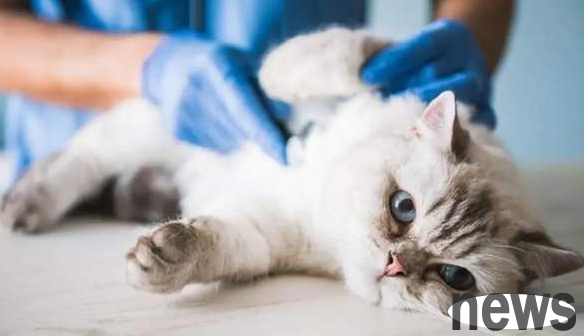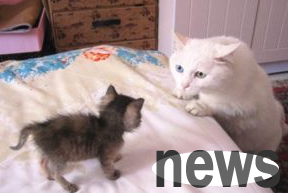Let you understand the symptoms and treatment management of cats with hypertension!
Any animal needs to maintain normal blood pressure during normal metabolic activities of the body. Excessive or low blood pressure will cause damage to the body. There are many reasons for abnormal blood pressure. Generally speaking, cardiovascular disease is the main factor. For cats, hypertension is often present in elderly cats, so the monitoring and management of hypertension has also become a routine item in recent years.
Although it is not recommended that blood pressure should be measured in all animals in full, blood pressure measurement is very important in animals that have already developed clinical symptoms, such as blindness, ataxia, epilepsy, pre-opia bleeding, or sudden fainting (may be related to cerebrovascular hemorrhage, edema or stroke). In addition to heart disease, diseases can also cause symptoms of hypertension such as azotriemia kidney disease, hyperthyroxine, hyperadrenergic, pheochromocytoma, adrenocorticone secretory tumors, obvious obesity, etc.

1. The etiology and pathology of hypertension The determinants of blood pressure are cardiac output (heart rate and stroke output) and peripheral vascular resistance. Systemic arterial blood pressure is regulated by complex mechanisms, and the pressure receptors of the carotid sinus and aortic arch respond to changes in blood pressure; lower blood pressure will stimulate the release of sympathetic nerves, causing vasoconstriction, strengthening the heart contraction force and increasing heart rate to normalize blood pressure; hormones that regulate blood pressure include catecholamines, vasopressin, renin, angiotensin, aldosterone, prostaglandin and natriuretic, and the renin-angiotensin-aldosterone system may be the most important part.
Due to the above regulatory mechanisms, enhanced sympathetic nerve activity, increased catecholamine production, activation of the angiotensin-aldosterone system accompanied by secondary water-salt retention and vasoconstriction, etc., can all lead to chronic increase in blood pressure.
Hypertension can be divided into primary or secondary. The cause of primary hypertension is not fully understood, but some cases may be related to genetic factors. One study reported that 2% of healthy cats had primary hypertension. Most cases of hypertension in clinical practice are secondary to other diseases, such as renal diseases, hyperadrenal cortex, and hyperthyroidism, which are common diseases that lead to increased blood pressure. Hypertension in dogs and cats with chronic renal failure can be caused by various mechanisms: low glomerular filtration rate and reduced sodium secretion can increase blood volume; local renal ischemia or decreased renal blood flow can activate the angiotensin-aldosterone system, reduce the production of vasodilator substances (such as prostaglandins and kallirein), and the related effects of secondary hyperparathyroidism.
2. Clinical symptoms of hypertension
1. Eye symptoms
Severe hypertension can cause eye damage. The easiest symptoms are bleeding from the eyeballs in the retina or vitreous body and even the anterior chamber. Then there will be retinal dissection or atrophy, retinal edema, retinal vasculitis, retinal vascular bending, and even the elevated intraocular pressure to form glaucoma. Due to retinal dissection or bleeding, clinical symptoms of sudden blindness can be formed.
2. Neurological symptoms
The clinical symptoms caused by unwell control of hypertension usually have bad prognosis, mainly due to bleeding blood clots in the brain. Cats with severe hypertension (systolic blood pressure > 300 mmHg) will experience progressive disorder, nodding or epilepsy. This syndrome is caused by brain edema. Once the systemic arterial pressure exceeds the self-regulation range, it will form and produce excessively high intravascular hydrostatic pressure, which will cause brain edema.

III. Treatment of hypertension
1. Drug therapy
The drugs commonly used in drug therapy are angiotensin converting enzyme inhibitors (ACEI), calcium channel blockers and beta-receptor blockers.
2. Dietary therapy
Although there are not many studies, a low-sodium diet will provide less than 0.25% sodium for dry weight in foods, dietary sodium restriction will be the first step to choose if hypertension is mild (<170,100 mmHg) and no damage to the target organ occurs. For animals with chronic kidney disease and hypertension, it is more important to maintain a proper intake of a calorie than a continuous feeding diet with a low sodium. Therefore, drug treatment needs to be established first, and when the blood pressure has stabilized, the animal may be able to convert to low-sodium foods.



